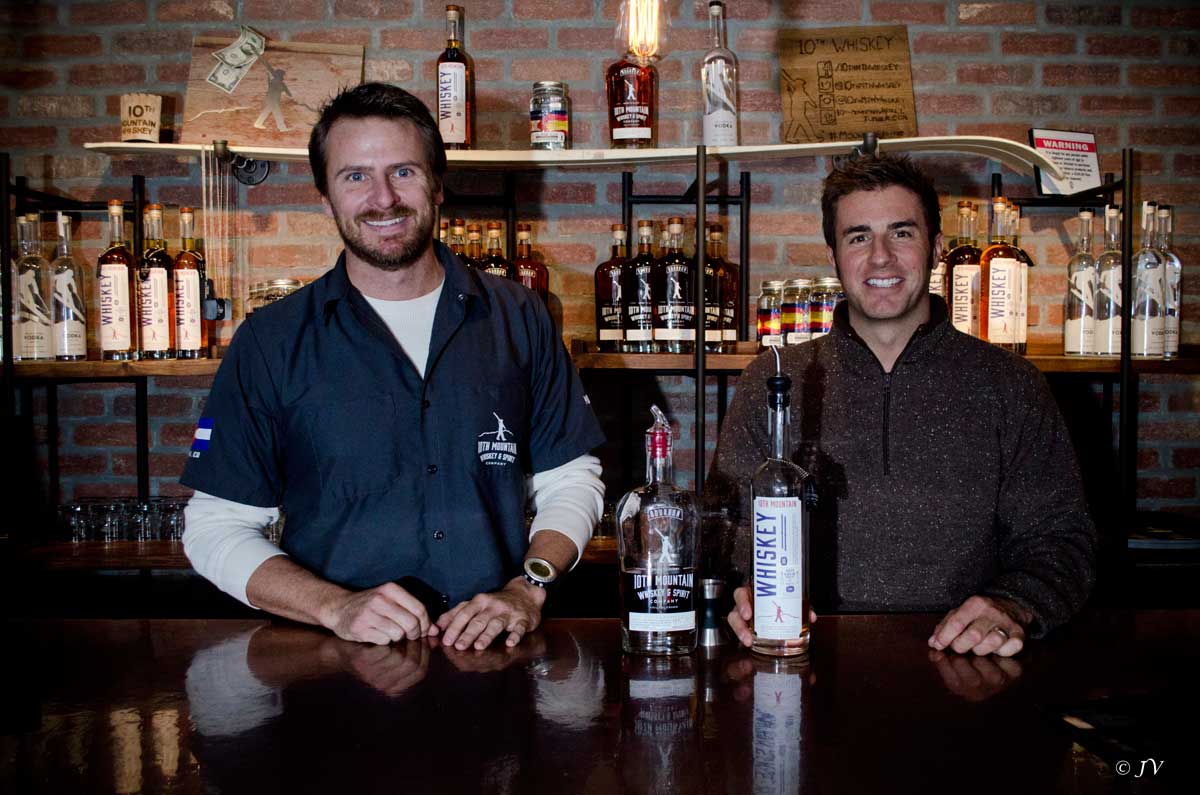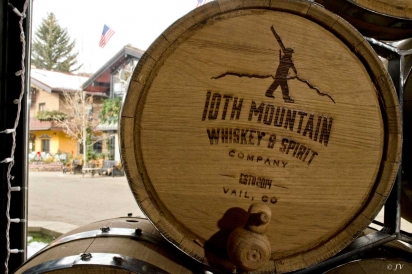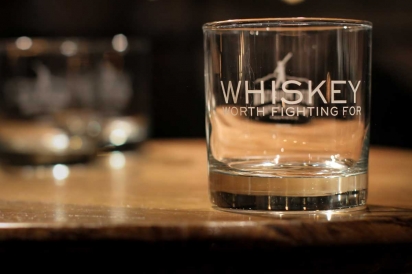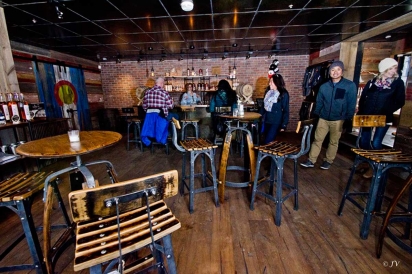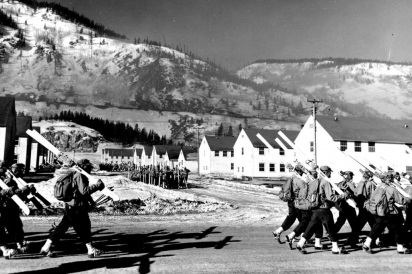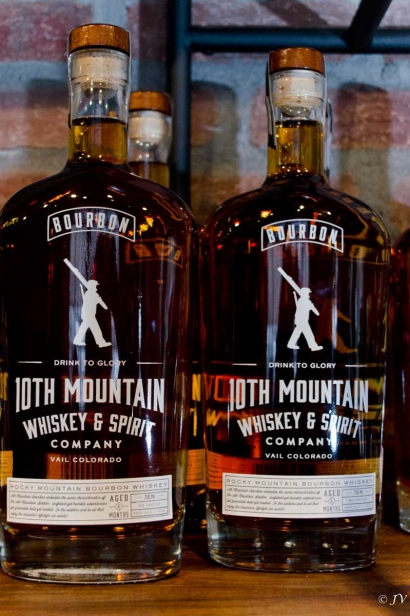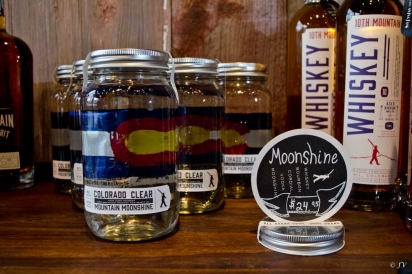Moonshine Mountain High
No one can accuse Colorado of failing to embrace new business opportunities in the agricultural realm. We’re the epicenter of craft beer, boast acclaimed cheesemakers, produce wine, and then there’s that whole marijuana thing. For the last couple of years, however, the headlines have reported on the boom in distilleries (50 and counting), which stretch from the Front Range to the San Juan’s.
One of the newest craft distillers in the state is Vail’s 10th Mountain Whiskey & Spirit Company, which debuted last September. The Eagle Valley’s first distillery is owned by longtime locals Christian Avignon and Ryan Thompson who first met—appropriately enough—“over an après beer in the late 90s.”
The business partners bonded over a shared love of skiing, the mountain lifestyle, and après ski culture, which planted the seed, if you will, for the distillery. The pun is apropos, because “grain-to-glass” distilling is a dying art worldwide, and 10th Mountain is one of a dwindling number of domestic producers actually making their own spirits from raw ingredient to finished product. Their current line includes whiskey, bourbon, rye, silky-smooth potato vodka, a cordial, and a compelling, slightly sweet, crystal-clear Olathe corn-based Moonshine (technically, it’s classified as an unaged whiskey, and at 80 proof, it will knock your socks off, but no firewater, this). All of the grains—rye, barley, corn—are sustainably grown in Colorado, primarily in the Alamosa area), while the potatoes come from a farm in the Northwestern part of the state.
Today, most domestic distilleries buy spirits in bulk, and simply age and bottle them at their facility. This isn’t to say the resulting products are poor quality, any more than a spirit made the old school way is superior. Rather, it’s reflective of a global trend toward mass spirit production and expediency, abetted by misleading marketing. I mention it because if you really care about the provenance of your hooch or supporting local growers and craftsfolk, it’s good to do a bit of research before throwing down your cash.
When Avignon and Thompson decided to open a distillery, they attended “Moonshine University” in Louisville, Kentucky, to learn the science of the process, as well as the business side. They hired distiller Shawn Hogan to run their 7,000-square-foot facility in Gypsum, which was financially and logistically a more reasonable place to base their operation; they’ll begin offering tours and an on-site tasting room this summer (the plan being to open the metaphorical door for more indie retail businesses to base themselves in the small town). 10th Mountain also has a small, rustic, mountain-style tasting room and retail shop in Vail Village.
The tasting room aesthetic reflects both the name and the underlying message and mission of 10th Mountain Whiskey & Spirit Company. Avignon’s late grandfather Fred Vetter was a member of the esteemed 10th Mountain Division, an elite Army corps trained in mountain survival, combat, skiing, and animal packing (horses and mules were used to carry ammo and other supplies in the Alps). Founded by Charles “Minnie” Minot Doyle, the founder of the National Ski Patrol, the training camp was based at Camp Hale, outside of Leadville.
Vetter joined the 10th Mountain in 1943, leaving his native upstate New York (“He grew up wearing wool and skis,” jokes Avignon), and was deployed to Italy’s Apennine Mountains in 1945 to assist with liberating the country. Vetter served as a field medic, and was fortunate to survive: the infamous battle had the highest casualty rate of any U.S. division in the Mediterranean.
Vetter’s legacy and that of his fellow 10th Mountain veterans had a profound effect not just upon Avignon, but the entire ski industry. Many vets opted to relocate to Colorado and other parts of the Rockies, and ended up establishing some of America’s most famous ski resorts—including Aspen and Vail. Other vets established the Aspen-based non-profit, 10th Mountain Division Hut Association, a 34 hut, 350-mile network of connected trails that was designed as a memorial to the fallen soldiers of the 10th Mountain.
Thus, a distillery dedicated to the memory of what is often referred to as “the greatest generation.” Says Avignon, “Ryan and I believe that the mountains bring out the fun in people, create lifelong memories, and spirits and après culture are a part of that. Part of our mission is to educate people about the 10th Mountain Division. Our tasting room has a lot of artifacts, including my grandfather’s original skis over the bar. We want people to understand that the 10th is why we’re [ski town tourists and residents] all here today.”
Adds Thompson, a former bartender and co-founder of Vail’s much-loved Westside Café (he’s still a business partner), “There are two things that really set us apart from other Colorado distilleries, besides our grain-to-glass ethos. We’re promoting a lifestyle, not just booze. Our goal was and is to create in Vail and Gypsum a home for our spirits, and to give a regionalism and terroir to our products.”
The other factor cited by Thompson as unique to 10th Mountain’s products is their distinctive aging process. After distilling their brown spirits in a custom-built, 500-gallon Vendome copper still (they produce just two barrels a day, as compared to commercial distilleries that crank out up to two barrels an hour), “We do what we call high altitude aging and agitation, because the brown spirits are younger than most others on the market. After we barrel them, we drive them from Denver to Leadville, which is a 5,000-foot change in elevation. In summer, we’ll go over the higher passes, like Independence. This changes the pressurization in the barrels, and opens the pores in the oak, which allows for more transfer and complexity of flavor.”
Come again? Thompson laughs. “It sounds a little kooky because it’s a new method, although encouraging the maturation of whiskey with different techniques is an old practice. We got the idea from talking to industry experts, who based it upon a company that replicates the same effect using a machine.”
Added labor, sure, but when you’re creating small-batch spirits rooted in mountain culture, it just makes sense.
Planning a visit to Vail? The 10th Mountain tasting room features flights, as well as two barrel-aged and two infused seasonal cocktails daily. You can also find their spirits being poured at Restaurant Kelly Liken, Mountain Standard, and Westside Café (their Bloody Mary’s are legendary).
In the Aspen area, look for 10th Mountain spirits at The Red Onion and Four Dogs Wine & Spirits.
Mountain Mule
“We wanted to create a spirit that was a tribute to Colorado,” says Thompson, “but also approachable. It’s a great stand-in for vodka, and makes a mean Bloody Mary, great mixer for soda, or on-the-rocks sipper.” Celebrate bluebird days with this refreshing libation.
Recipe by Ryan Thompson, 10th Mountain Whiskey & Spirit Company
Makes one cocktail
Grab your favorite copper cup
Fill with ice
Add 2 ounces 10th Mountain Colorado Clear Mountain Moonshine
Top with ginger beer
Add a squeeze of lime


